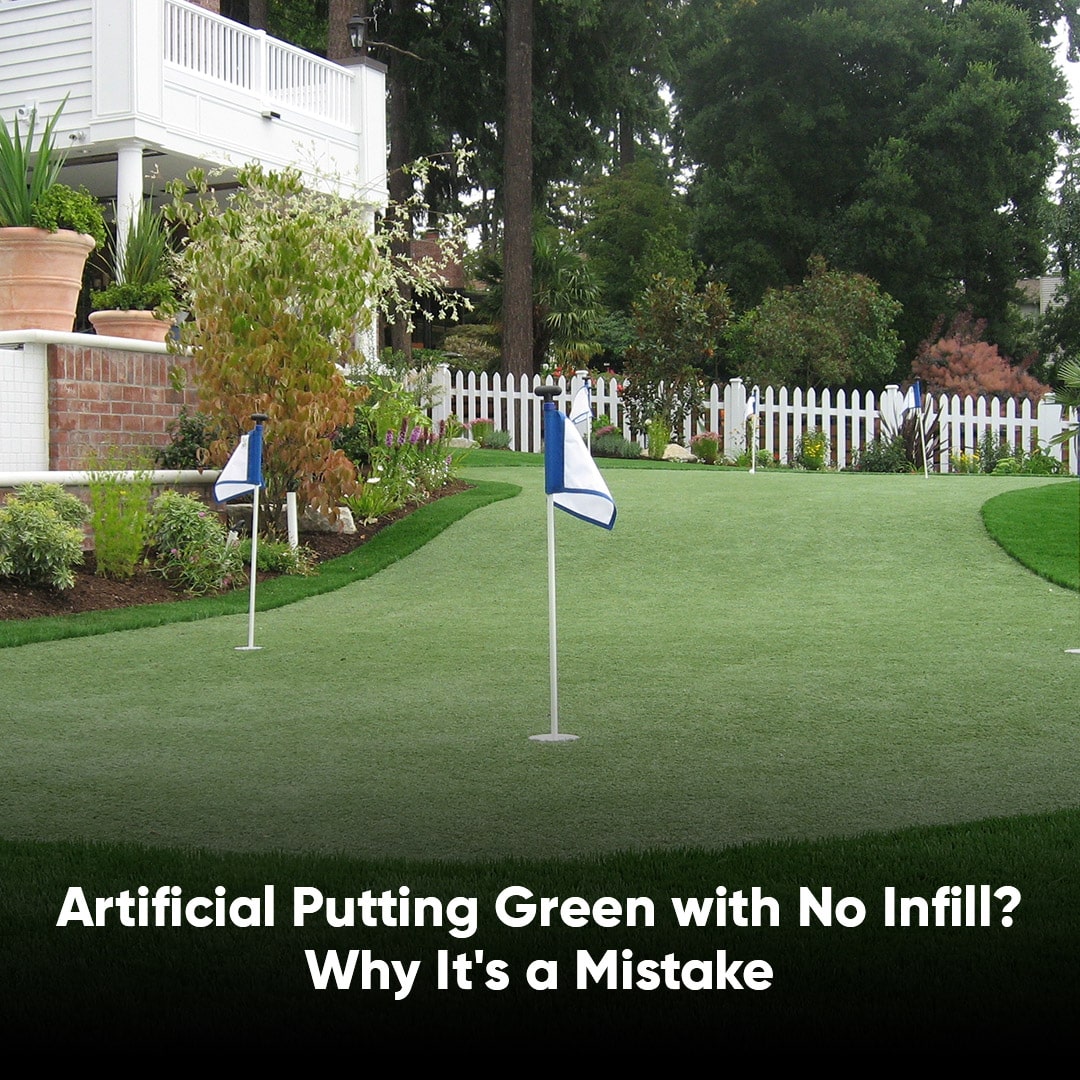- BACKYARD
- COMMERCIAL
- ENVIRONMENT
- FIELD TURF NEWS
- GOLF
- MAINTENANCE
- NEWS
- PETS
- POOL
- RESIDENTIAL
- TURF TIPS
Does Artificial Putting Green Turf Need Infill?

Dreaming of perfecting your short game in the comfort of your own backyard? An artificial grass putting green can be a wonderful training aid for golf enthusiasts, not to mention a beautiful addition to any landscape. But as you explore the installation process, you might stumble upon this common question: “Does putting green turf really need infill?”
The answer? Infill is not an optional extra for a serious putting green – it’s a crucial component for both performance and longevity. Here’s why:
What Infill Does for a Backyard Putting Green
Infill is a granular material, typically composed of sand, rubber, or specialized coatings, that is spread amongst the blades of putting green artificial grass. It performs the following functions:
- Blade Support and Stability
Infill acts as a ballast for artificial grass installations, weighing down the turf fibers.
On a putting green, this is arguably infill’s most crucial role. Infill provides the necessary support to keep the delicate, short blades of putting green turf perfectly upright. This ensures accurate directional control and the truest possible putting experience.
- Ball Roll and Speed
The type and amount of infill directly influences how the ball rolls on your putting green. The type, amount, and shape of the infill all influence how much friction the ball encounters, allowing you to customize the speed of your green to match your preferences.
For instance, a heavier, rounded infill like silica sand typically slows a ball down, while lighter infill options allow for faster speeds.
- Surface Smoothness and Consistency
Infill fills the spaces between blades and along the backing, creating an incredibly smooth, even surface essential for dependable ball roll. Without infill, indentations or uneven spots would make putting unpredictable.
- Drainage
Proper infill, especially sand-based options, facilitates drainage on your putting green. This prevents water from pooling on the surface, keeping the green playable even after rain.
- Protection and Longevity
On an outdoor putting green, infill protects the delicate fibers from flattening under the repeated stress of putting, foot traffic, and UV light. This helps to extend the lifespan of your putting green.
- Aesthetics
Infill typically comes in shades of green, brown, or black. These colors complement the artificial turf and create a natural-looking contrast between the “grass” and the “soil” beneath.
This mimics the color variation you would see on a real putting green. Some infill even comes in a multi-tone blend to further enhance the natural look.
High-quality infill also has a slight matte finish that helps to reduce glare from the sun. This eliminates an unnatural shine that can detract from the realism of the putting green. A real green wouldn’t have a shiny surface and infill helps to prevent that artificial look.
- Cushioning and Support
Infill also adds a surprising degree of comfort when you’d like to use your backyard putting green for simple relaxation or lounging. The added padding makes the surface softer and more comfortable to sit or lie down on, especially compared to simply the bare artificial turf.
- Surface Smoothness
As mentioned earlier, infill creates a smooth, even surface essential for consistent putting. This evenness translates well to lounging too. You won’t be bothered by lumps, bumps, or rough seams that could make relaxing less enjoyable.
- Temperature Regulation
Special putting green infills, especially lighter colored sands, can help regulate the temperature of your putting green. The material absorbs and distributes heat more evenly than artificial turf on its own, preventing unpleasant hot spots that would make lounging uncomfortable.
How Much Infill Do You Need for a Backyard Putting Green?
The amount of infill depends on the pile height of your turf and the type of infill. A general guideline is 1-2 pounds of infill per square foot, but it still depends on what kind of putting green experience you’re looking for. Too much infill can reduce ball speed dramatically, while too little will compromise support and protection.
The Bottom Line
Think of infill as an investment in the quality and longevity of your putting green. While it might add some cost upfront, it will ensure you get the most out of your backyard practice sessions for years to come.
Learn more about infill and other elements of the best putting greens with FieldTurf Landscape! Call 866-352-4575 or message us to book your free consultation.


